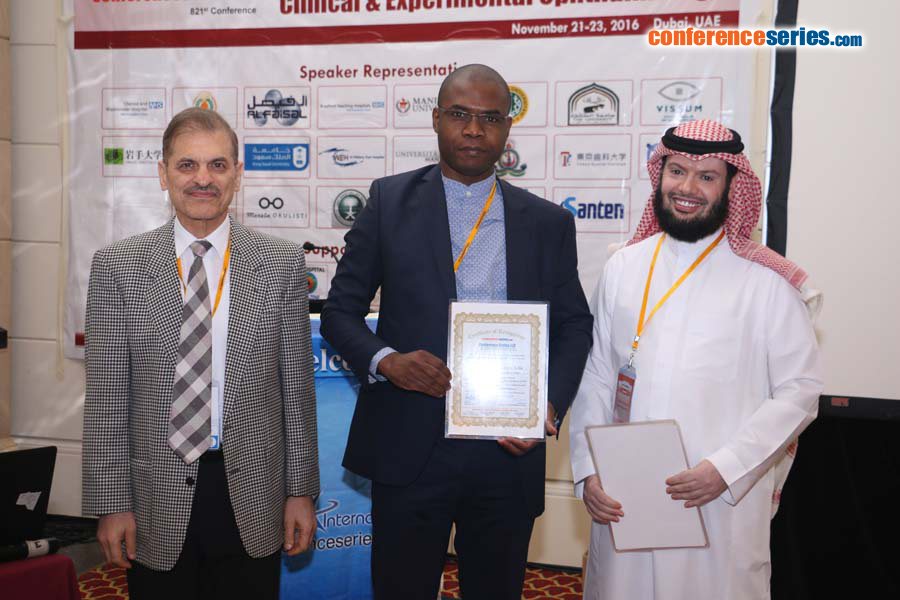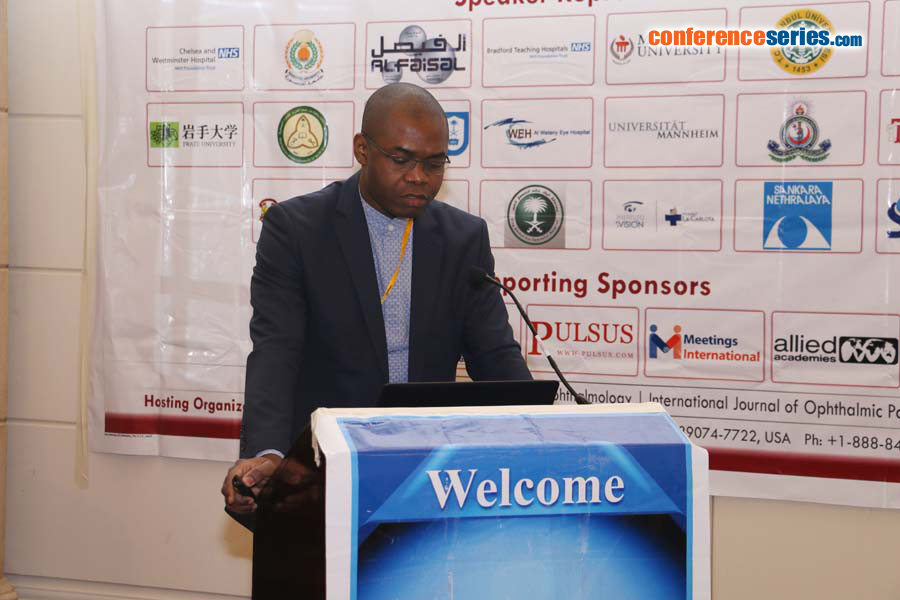
Pepin Williams Atipo Tsiba
Marien Ngouabi University
Republic of Congo
Title: Ocular disorders in onchocerciasis
Biography
Biography: Pepin Williams Atipo Tsiba
Abstract
Onchocerciasis is a dermal oculocutaneous filariasis caused by Onchocerca volvulus. It is transmitted to humans by the bite of a black fly called Simulium. Transmission is by the blood-sucking female insect. This female insect becomes infected by biting a sick man and then infects a healthy person by another bite. Geographic distribution of onchocerciasis includes tropical Africa, the corresponding region of South America and Central America and Yemen. The adult worm is hosted in subcutaneous nodules where it can live about 10 years, during which the female releases millions of embryos. Those will give life to free microfilariae (Onchocerca volvulus) attracted by the light, which migrating from the dermis to the eye and induce damages responsible of the “river blindness”. The general signs begin around 1 year after the infecting bite and are all the more affirmed that contamination is repetitive; river blindness is a cumulative parasitosis. The general syndrome includes headache, asthenia; weight loss and kidney damage. The cutaneous syndrome is characteristic and dominated by the following signs: pruritus (filarial scabies), lymphoedema, skin pigmentation and subcutaneous nodules (onchocerciasis nodule) harboring the adult heartworms. Ocular disorders are observed in about 70% of people living in endemic areas. They are severe in case of immunosuppression. These ocular manifestations are proportional to rate of microfilariae in the body, and are mainly represented by keratitis and chorioretinitis.




